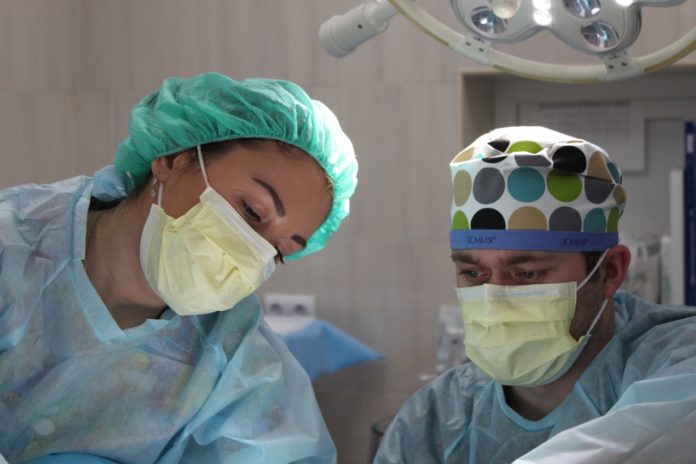Healthcare is undergoing a change—a redefinition. The pace of change increased manifolds after the recent pandemic, and every aspect of it was critically evaluated. Due to this, healthcare’s ability to respond to disasters is still being scrutinized.
The distress faced by the healthcare infrastructure at the start of the pandemic and an inability to respond to patient needs efficiently have sent alarming signals to the members sitting in decision-making corridors. During the pandemic, healthcare experienced an overall shortage of equipment, medication, experienced and qualified personnel, and physical infrastructures, such as beds and isolation centers.
In order to avoid such a happening again, healthcare plans to be more proactive in planning and decision making. Major healthcare trends might surface in healthcare in 2022 and the ensuing years. The system and the healthcare providers need to be prepared to understand and work around these trends. Some of these trends are:
1. Increase in nursing staff
Nurses are the mainstay of healthcare— the frontline brigade, called for any crisis. However, healthcare is witnessing an extreme shortage of nurses, especially in recent years. An aging population and thousands of nurses retiring in recent years are the reasons for this increase in demand. During the pandemic, when the number of patients thronging the floors of the hospitals increased exponentially, this shortage was felt even more clearly.
Given the demand for nurses’ jobs and patient care services, multiple reports project that US healthcare will need approximately 1.2 million nurses by 2030 to meet the shortage. The shortage is not limited to one specialty only. All specialties and healthcare areas need the induction of competent and qualified nurses on a war footing.
2. Need for a highly educated nursing workforce
However, the induction of highly qualified nurses is just one of many future trends in nursing that can transform patient care delivery. Another related trend is the need for highly educated nurses in healthcare. In recent times there has been a wave of preferring more qualified nurses. Though many older nurses struggle to keep up with this trend, others have responded to this call and enrolled in advanced education degrees such as an MSN and DNP. The same trend might grow in the subsequent years too. You will find many diploma holder nurses enrolling in part-time bachelor’s degree programs.
The impetus causing this shift includes the change in the patient care needs, the introduction of highly efficient but intricate medication and surgical procedures, and the technological takeover of healthcare. More hospitals have increased their threshold employment requirement. They want to see a bachelor’s or an MSN degree on the resume of those currently working for them and the new hires.
3. More interest in online education
Most healthcare providers currently working in the hospitals have received their degrees by attending on-campus classes. But the current trend is quite different. Interest in online education that started during the pandemic shows an upward trajectory.
During the pandemic, all the institutions halted their operations due to social distancing requirements and later resorted to online mode. But, with time, many sectors, especially healthcare, have realized the benefit of the online mode of education.
Now healthcare providers are expected to gain higher education, but due to the existing shortage of qualified personnel, most of them cannot leave the work setting. Hence, enrolment in online programs is expected to witness a higher momentum.
The medical education market might grow to $125 billion by 2025. A greater interest in online education is one of the reasons for such tremendous growth. Other factors include increased induction of technological applications and efforts to encourage more students to enroll in online healthcare programs.
4. Interest in technology will grow further
The use of technology is already rampant in healthcare. But now, the use of efficient and smart technology and patient management tools are expected to grow. The shift is towards using digital technology applications that can reduce the burden on the current workforce and make the existing procedures and systems more accurate and efficient.
The use of robots is one of the ways healthcare is inducting technology into its operations. There is an increase in the use of medical robots not only in operation theatres and in clinical settings to support healthcare providers. The global medical robot market is expected to grow from USD 5.9 billion in 2020 to USD 12.7 billion by 2025, displaying a growth rate of a CAGR of 16.5%. Hence, more healthcare professionals must be ready to find robots working around them and helping them most reliably and efficiently.
The motivation also lies in reducing clinical errors, improving patient care outcomes, tracking data over time, and facilitating coordination. The use of smart technologies such as IoT, wearable, and the internet will upsurge too. And, healthcare providers will see hospitals investing in smart beds, providing smart wearables to physicians and critically ill patients for real-time monitoring of their condition.
5. Increase in remote patient monitoring
RPM or Remote patient monitoring uses technology to monitor patients and diagnose their illnesses. It leverages technology to gather patient data from outside the clinical setting. The remote patient monitoring technique mainly collects physiologic healthcare data from the patients and transmits it to healthcare providers through digital technology applications. The healthcare providers assess the information and often share their recommendations. Some of the devices used in remote patient monitoring include blood pressure monitors, weight monitors, and blood sugar monitors.
More hospitals may have dedicated units to engage their physicians with remote patient monitoring. This care system is most effective and beneficial for critically ill patients that need real-time tracking. Physicians can get instantaneous information about their health status and the performance of their vitals. This way, it is much easier to catch an anomaly.
Conclusion
Healthcare is leveraging the power of technology and the competencies of care providers to undergo a change for the better. With more qualified staff and efficient technological applications, patients can expect better care delivery. However, at the same time, the healthcare providers will have to adjust to these transformations in healthcare. They must be ready to upskill, work with robots, and rely on remote patient management techniques.










